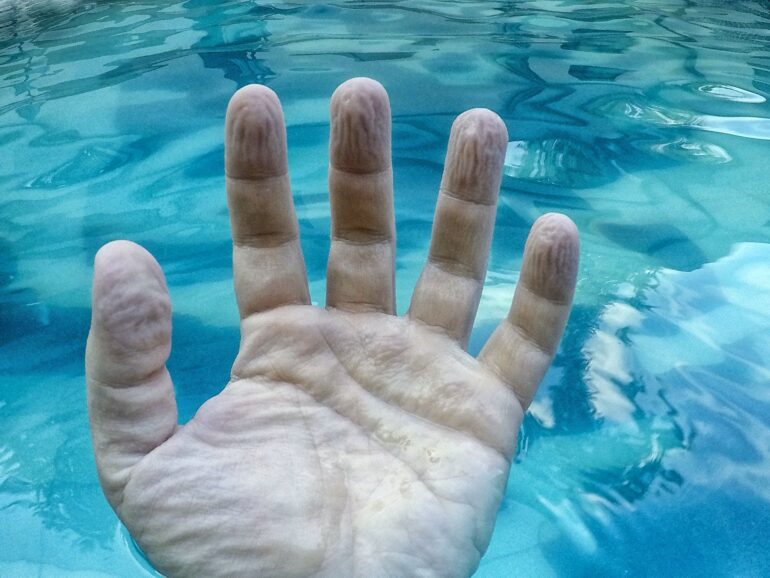
Curious Kids is a series for children of all ages. If you have a question you’d like an expert to answer, send it to [email protected].
Why do fingers and toes get wrinkly and change color after a dip in a pool or a bath? – Raymond Y., age 12, Bothell, Washington
Skin is an awesome and weird organ. As the body’s biggest organ, it does a lot to look after you, protecting you from the outside world of sunlight, harsh chemicals, nasty germs and severe cold. And it does all this while keeping water inside your body and enabling the sense of touch.
I’m a biomedical engineer. My research team and I try to better understand the mechanics and function of soft biological tissues.
We know skin wrinkles as you get older or when you pinch it between two fingers. But it’s been somewhat of a mystery why skin gets wrinkly and even sometimes changes color after you take a leisurely bath or spend too long in the swimming pool.
Often people assume that these wrinkles form because the skin absorbs water, which makes it swell up and buckle. To be honest, I did too for a long time.
But researchers back in the 1930s discovered that in people with nerve damage in their fingers, the post-bath wrinkles didn’t form. Wrinkly fingers can’t just be due to water absorption then, or this would be a universal phenomenon, no matter how well your nerves are or aren’t working.
So, if it isn’t swelling due to water, then what is behind pruny fingers and toes after a long swim? Scientists have recently discovered what they think is the answer.
A nerve signal for narrower blood vessels
To explain what is happening, first you need to know a bit about the autonomic nervous system – the involuntary part of how your body works. Functions like breathing, blinking, your heart pumping or your pupils constricting in the sun all happen without your needing to consciously control them, thanks to the autonomic nervous system.
It also automatically controls the expansion and contraction of your blood vessels. Typically, temperature, medications or what you eat or drink can cause your blood vessels to expand or contract. Think of how your skin may flush of its own accord when you go out into a hot day, exercise or even blush.
This contraction of your blood vessels is also what causes the skin to wrinkle after a lengthy swim.
When your hands and feet come into contact with water for more than a few minutes, the sweat ducts in your skin open, allowing water to flow into the skin tissue. This added water decreases the proportion of salt inside the skin. Nerve fibers send a message about lower salt levels to your brain, and the autonomic nervous system responds by constricting the blood vessels.




